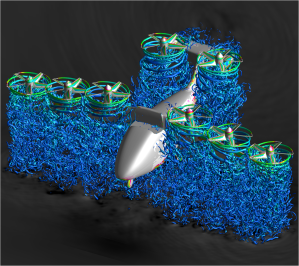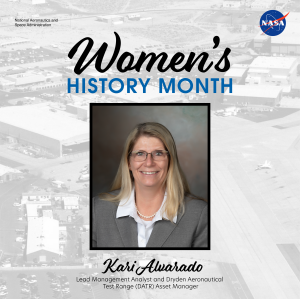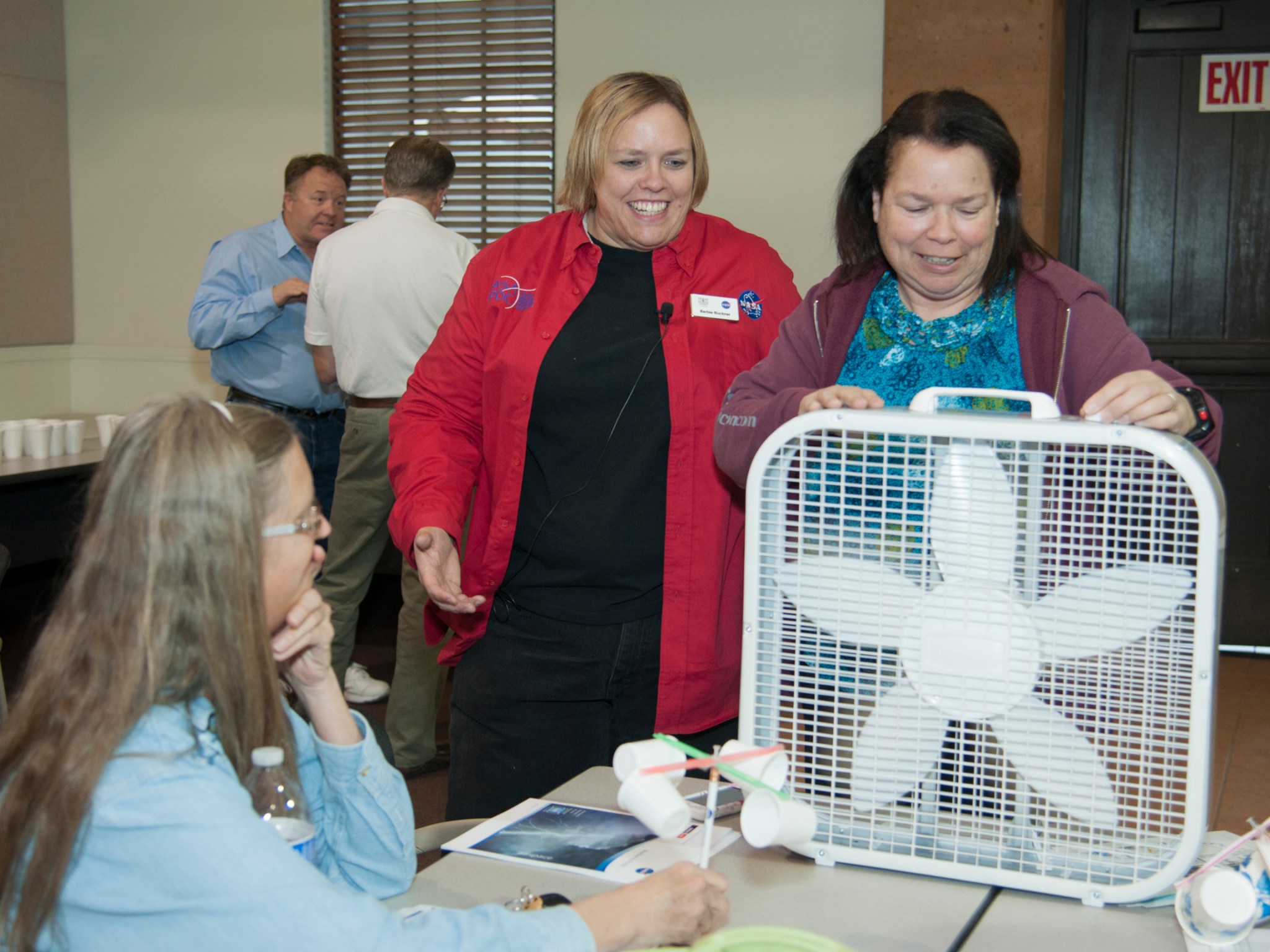
Local educators learned recently about the physical forces contributing to weather conditions when they attended a workshop called “Weather to Fly By.”
The workshop conducted by education specialist Barbie Buckner was held at the NASA Armstrong Flight Research Center’s Office of Education’s Resource Center located at the AERO Institute in Palmdale, California, in February.
Buckner started the workshop with an overview on the elements of weather such as wind, temperature and air pressure all of which can specifically affect pilots.
“It’s extremely important for pilots to know about wind direction so they can accurately predict how much fuel they will need and how to safely land the plane, ” Buckner said. “They also must be aware of fluctuations in pressure and temperature to prevent flying into unsafe atmospheric conditions that may cause wing icing.”
The 31 educators were each given a booklet that included six classroom weather-related activities to use in their school curriculum planning. The group participated in two of the booklet activities to test how the activities would work in a live classroom environment.
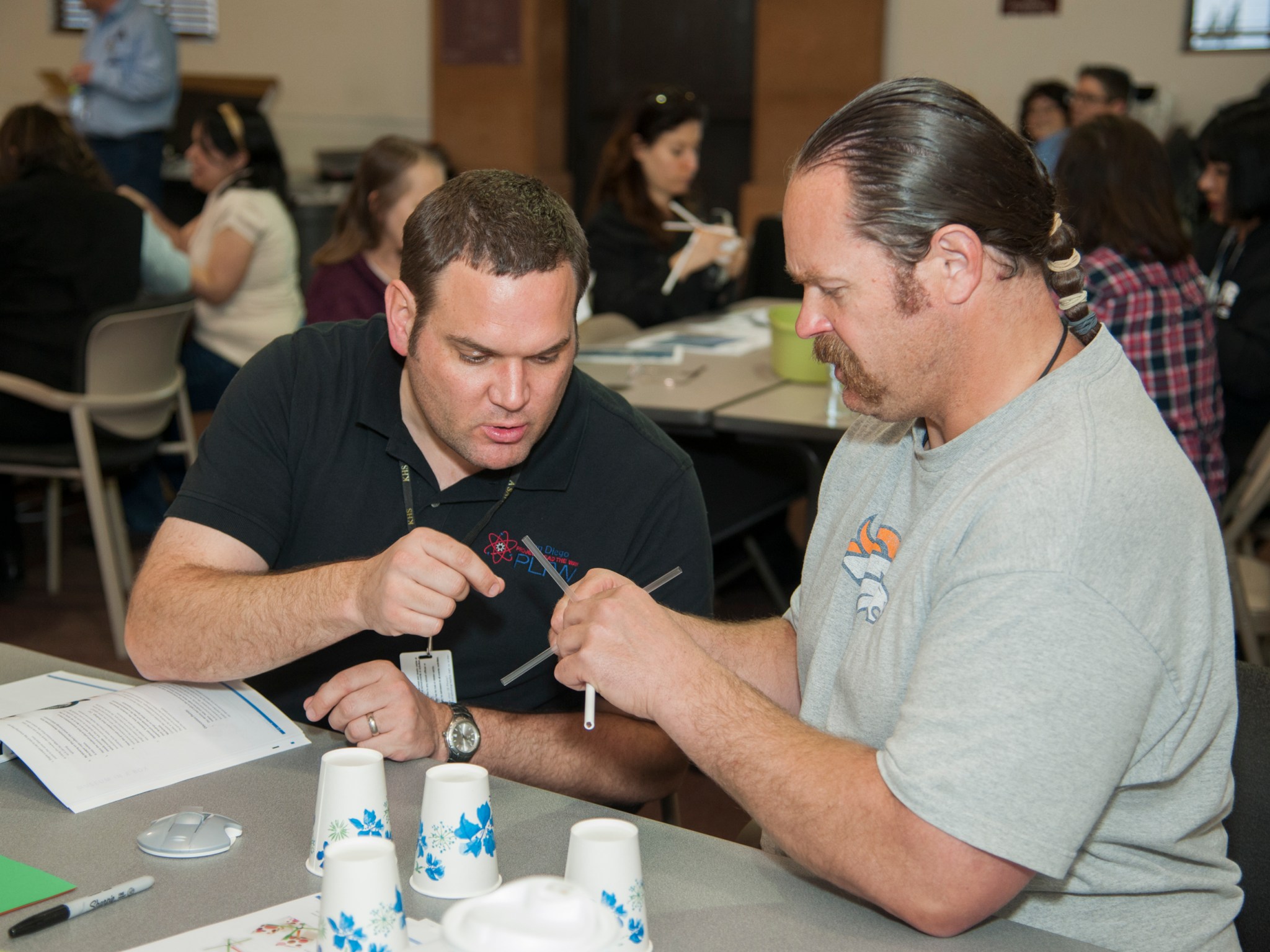
One activity involved splitting the educators into groups to craft an anemometer, a scientific instrument used to measure wind speed and direction, using materials such as straws, paper cups, and thumbtacks,” Bruckner said. “Table-top fans acted as wind and direction when each group used their anemometers.
“Encouraging your students to make design adjustments with the materials inspires critical thinking skills, which is needed throughout the engineering design process,” Buckner remarked.
Irene Bever, a parent who home schools her son during the week, commented, “The experiment may not always work the way they expect it to but then it opens up for discussion of why it went differently.”
The workshop also featured a guest speaker from the National Oceanic Atmospheric Administration (NOAA). Gary Wick, NOAA physicist and manager for Unmanned Air Systems, gave a presentation on NOAA and NASA’s ongoing partnership in the Sensing Hazards Operational Unmanned Technology, or SHOUT missions.
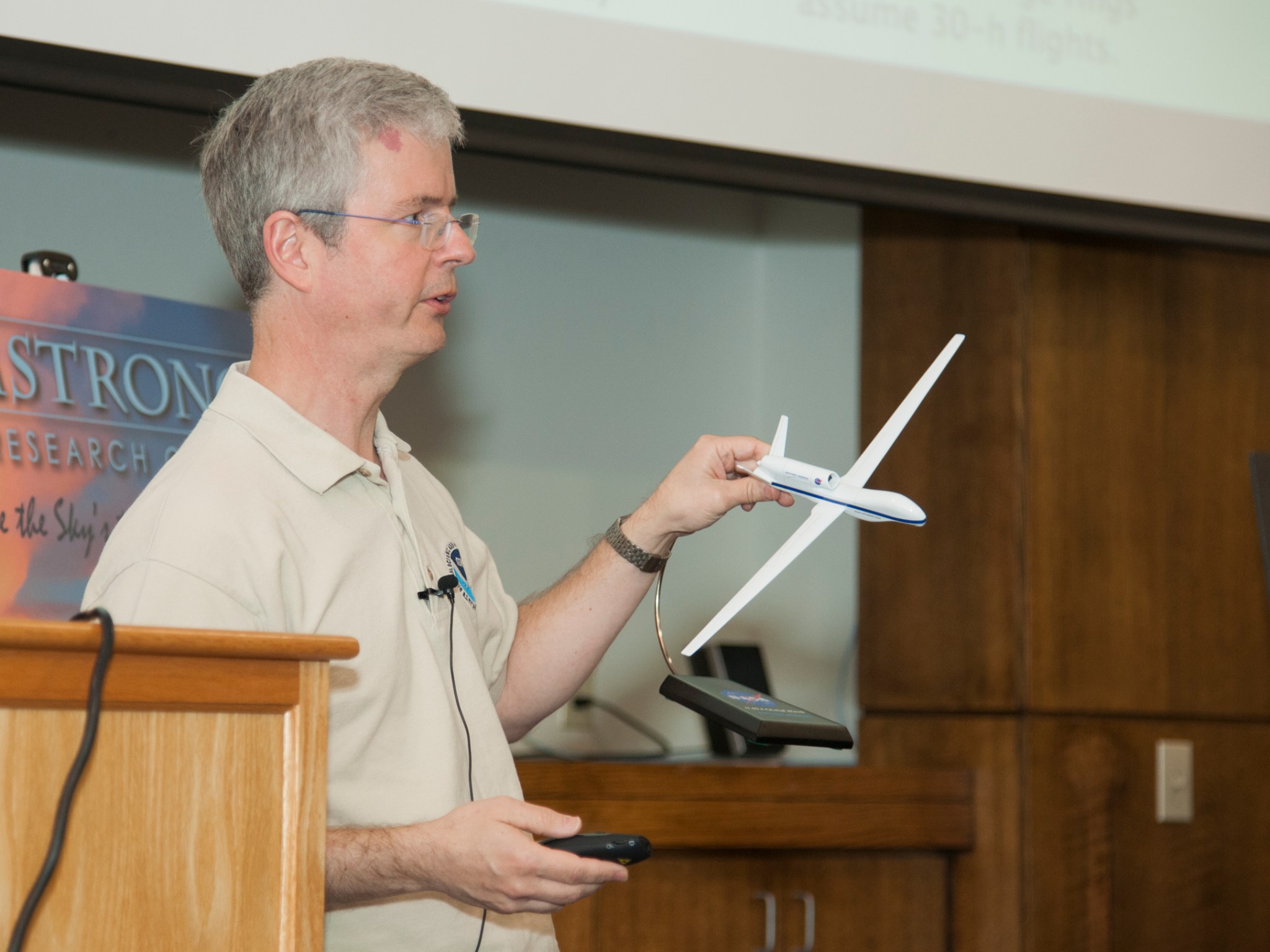
According to Wick, the mission uses NASA’s Global Hawk autonomously piloted aircraft to improve hurricane track and intensity forecasting. This year’s SHOUT mission provided NOAA scientists a more detailed view of El Nino weather events happening in the Pacific Ocean.
Wick explained that this information was crucial to preparing Pacific coast residents and government officials for intense and harmful El Nino storm activity.
“The educator professional development workshops are a great way, not only to provide educators with the tools they need to effectively teach science, technology, and math in their classrooms,” Buckner said. It is also a way to showcase the unique weather research happening at NASA and NOAA.”
To learn more about the Education Resource Center workshops visit:


























